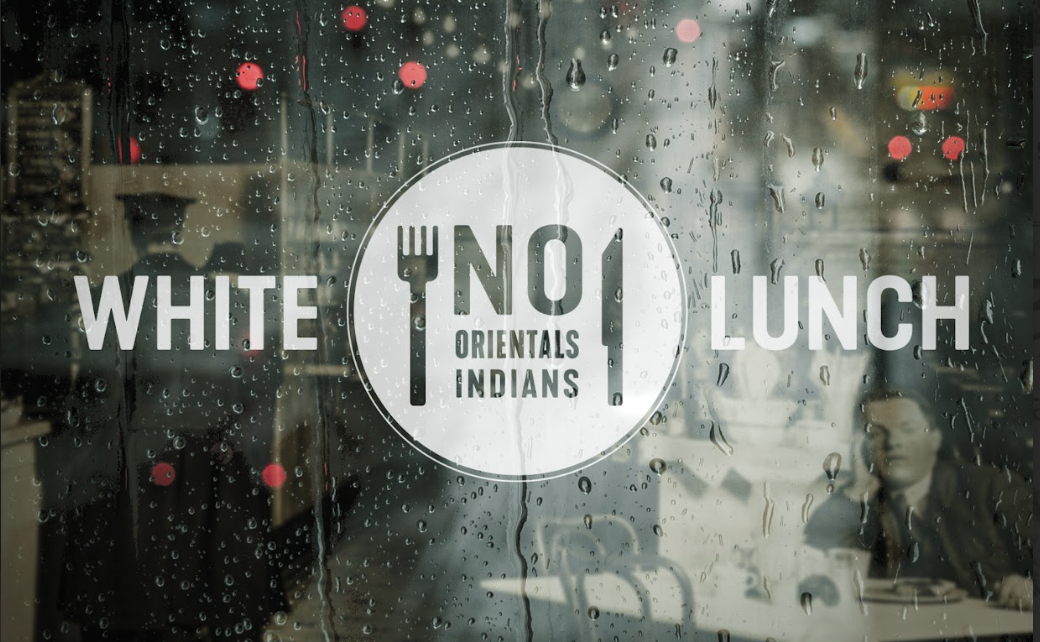Our content is fiercely open source and we never paywall our website. The support of our community makes this possible.
Make a donation of $35 or more and receive The Monitor magazine for one full year and a donation receipt for the full amount of your gift.
One hundred years ago—July 1, 1923—the Canadian government passed “An Act Respecting Chinese Immigration.” Known as the Chinese Exclusion Act, it was an overtly racist law prohibiting the arrival of newcomers from China. It also required all people of Chinese heritage, including the Canadian-born, to register with the federal government in order to stay in the country. Chinese Canadian communities across the country mobilized to lobby against the act but in the end their efforts failed to stop its passage. Thus, July 1 came to be known as “Humiliation Day” for many Chinese Canadians.
On the 100-year anniversary of the passing of the Chinese Exclusion Act, The Monitor is releasing a series analysing the context in which the Act passed, resistance to the law, and its historical legacy. These articles are a serialization of the booklet 1923: Challenging Racism Past & Present, which you can read in full at https://challengingracism.ca/
Read the full series
This article is one piece of a larger series, which looks at the history of the Chinese Exclusion Act, 100 years after it passed in 1923. We will update this list with hyperlinks as the series is released.
You are here: Chapter 1: Challenging Racism, 1912-1914
Chapter 2: Anti-Racism and the War, 1914 – 1916
Chapter 3: The Revolts, 1917-1919
Chapter 4: Global Challenges to Racism, 1919-1922
Chapter 5: Backlash, 1920-1922Echoes of 1923?
Echoes of 1923?
In the aftermath of the White Riot (the anti-Asian riots in Vancouver) in 1907, the federal government moved quickly to restrict Asian immigration to Canada. By World War I, the Canadian state had organized white supremacy into the everyday lives of people living in Canada. Genocidal policies converted traditional Indigenous territories into private property, dispossessed Indigenous people from the land, and confined them to reserves. Chinese, Japanese, South Asian, and African people were ghettoized, while facing systemic and often legislated discrimination in employment and access to public facilities.
Discriminatory policies limited their immigration to Canada at the same time that white Europeans were being given land stolen from Indigenous people. Chinese, Japanese and South Asian people in BC, Chinese people in Saskatchewan, and First Nations people everywhere could not vote in elections or hold political office. Yet, those who experienced this racism did not stand idly by. In the years leading into World War I, they organized to expose white supremacy and to demand their rights in Canada.
The Nishga Petition
In May 1913, representatives for the Nisga’a Nation traveled to London to present the British king with a petition requesting a judicial ruling on their assertion that they had never relinquished title to their traditional territories. The Introductory Note of the Nishga Petition described its purpose as the pursuit of a judicial determination of the Rights of the Indigenous Tribes of British Columbia given the expropriation and selling of some of the lands belonging to the Nishga by the provincial government.
This violated Britain’s own policy recognizing Indigenous title to land in North America. The Nishga had been demanding land back since 1887 when a delegation of Nishga and Tsimshian peoples, led by Chief Israel Sgat’iin, arrived in Victoria to protest the government’s reserve system.
In response to their demands for larger reserves and the signing of formal treaties, BC premier Smithe told them: When the white man first came among you, you were little better than wild beasts of the field. The petition became a lightning rod as First Nations in British Columbia consistently defended their land and treaty rights before the Royal Commission on Indian Affairs for the Province of British Columbia (1912-1916), commonly known as the McKenna-McBride Royal Commission, named after federal commissioner Joseph McKenna and BC Premier Richard McBride.
Challenging Saskatchewan
Activists in both Chinese and Japanese communities in Moose Jaw and Regina convened meetings and mounted sustained protests when the Saskatchewan legislature introduced “An Act to Prevent the Employment of Female Labour in Certain Capacities,” in 1912. The law made it a criminal offence for any “white woman or girl” to work in “any restaurant, laundry or other place of business or amusement owned, kept or managed by any Japanese, Chinaman, or other Oriental person.”
The legislation, promoted by conservative white labour unions, some white women’s groups, and the Saskatchewan Retail Merchants Association, represented the convergence of white paternalism and maternalism in an effort to ‘rescue’ white working-class women who, in fact, had little interest in such protection. Local police charged Quong Wing and Quong Sing with violating the law after they refused to dismiss their white women employees at their restaurants in Moose Jaw. During the trials in the same city, the women resisted the racialization of their employer, as the testimony of Nellie Lane suggests:
From the 1912 trial transcript
Q.: What nationality is Quong Wing?
A.: Well, I treat him as myself.
Q.: I know, but what is he?
A.: I don’t know what he was, only what people
have told me.
Q.: What is he Mrs. Lane?
A.: I could not tell you.
Q.: What language does he speak?
A.: He can speak two, he can speak English and he
can speak Chinese.
Q.: Is he English?
A.: No he is not English, but I could not tell you
where he came from, it would be hard for me
to say, but he is as good as me and all.
Despite Nellie Lane’s testimony, Quong Wing and Quong Sing were convicted and fined. With the support of the Chinese community, they challenged the outcome right to the Judicial Committee of the Privy Council in London, without success.
The legislation was eventually amended in response to local and diplomatic protests, resulting in the removal of race-specific prohibitions to employing white women. Instead, the act required employers to apply for municipal licenses to hire white women workers, which gave local governments the liberty to continue racially profiling and discriminating against Asian business owners. The law stayed on the books until 1969 and also inspired similar legislation in Ontario, BC, and Manitoba.
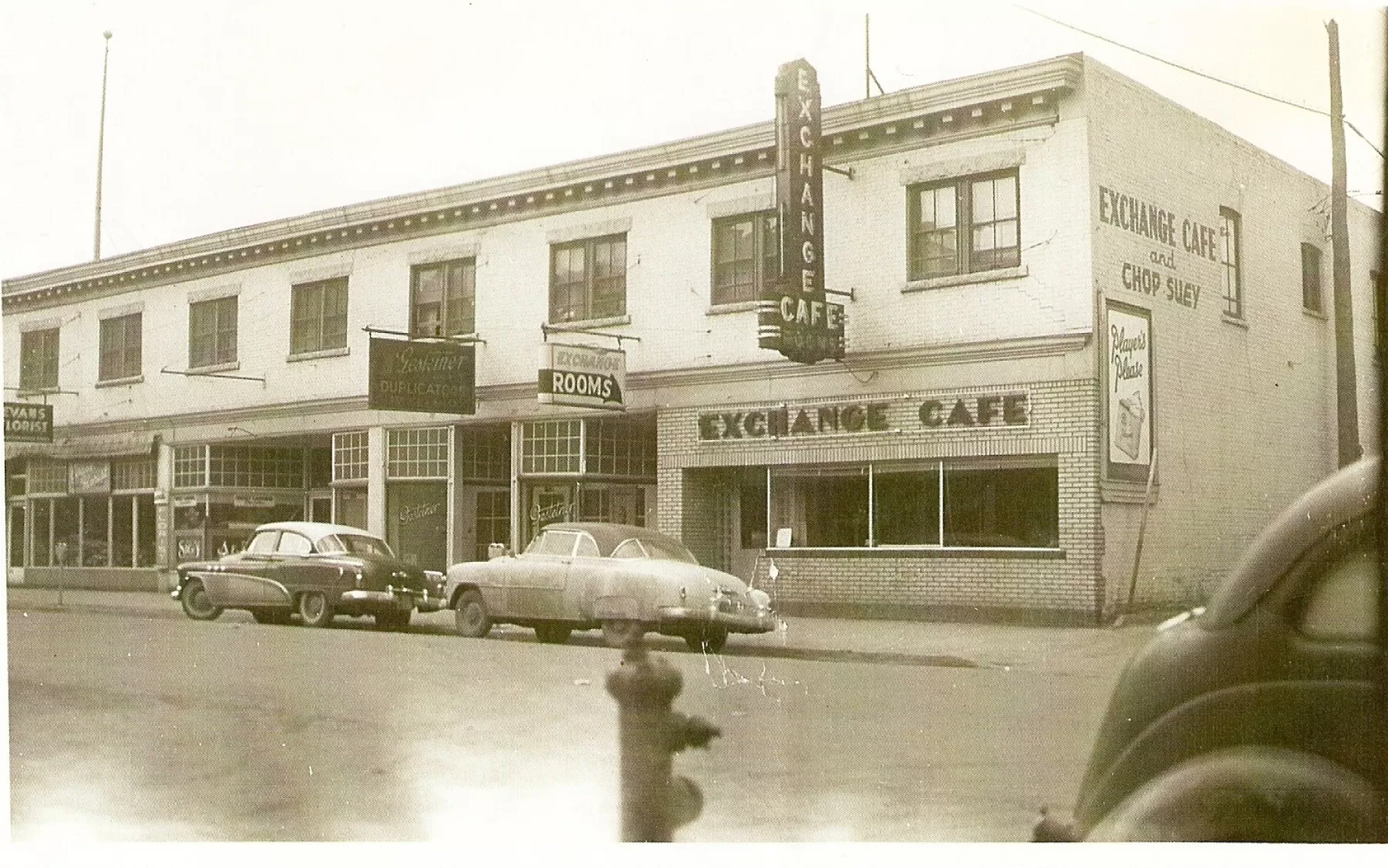
Exhange Cafe. mid 1950s. Clarence Sihoe family photograph.
The Ghadar Movement
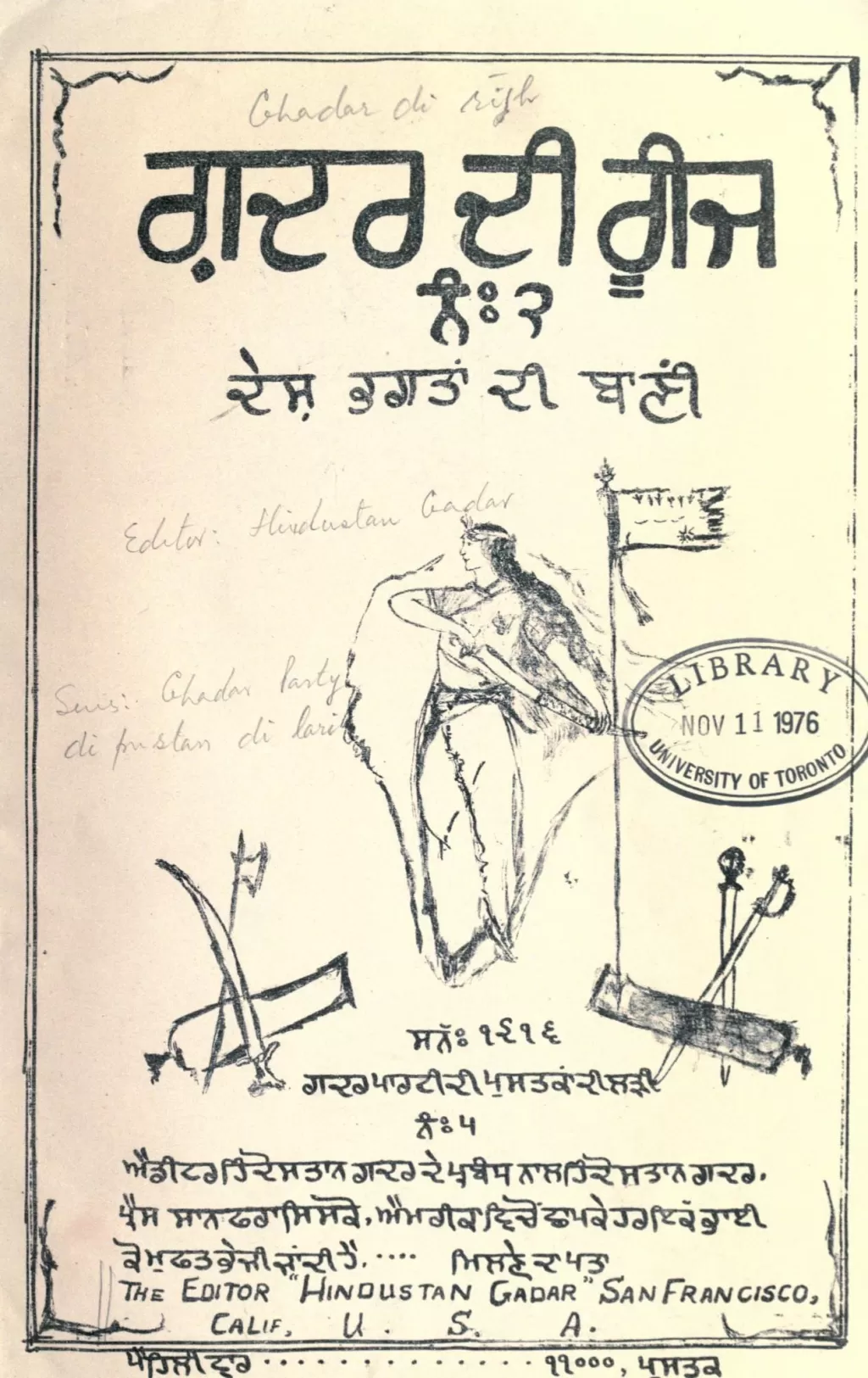
Ghadar di gunj (“Echoes of Mutiny”) is an anthology of nationalist and socialist poetry, here in its Punjabi edition. 1916. Photo: South Asian American Digital Archive
“Ghadar”–meaning “rebellion”, “mutiny,” or “uprising” in Punjabi and Urdu – was the name of a group and political movement created by immigrants from the Indian subcontinent living along the Pacific Coast of North America. From San Francisco to Vancouver, Ghadar inspired waves of anti-colonial, anti-British, and revolutionary ideas across the Asia Pacific region. In June 1913, Sohan Singh Bhakna and Lala Har Dayal inspired a meeting of minds that led to the creation of the Hindu Association of the Pacific Coast, later known as the Ghadar party. The aim of this party was simple – to advocate for an independent India free from British rule.
The main newspaper for the party was Ghadar. In its inaugural 1913 issue, Ghadar printed poignant words expressing the goals and stakes of national liberation:
Pay: Death
Prize: Martyrdom
Pension: Liberty
Field of Battle: India
Many Ghadarites had Vancouver and Abbotsford connections and were known to give powerful speeches at gurdwaras, or Sikh places of worship. Though violently repressed by the British, the Ghadar party’s influence lasted until the late 1920s. The Ghadar movement helped India achieve independence from British rule in 1947 but the impact of this diaspora-driven anti-colonial movement continues to this day.
The Ghadar party effectively used the art of poetry, as seen in Ghadar Di Gunj (Echoes of Mutiny), an amazing anthology of Ghadar party poetry with an initial run of 12,000 copies. A short but powerful example of a poem in this anthology reads:
No Pandits or Mullahs do we need,
No prayers or litanies we need recite,
These will only scuttle our boat.
Draw the sword, it’s time to fight.
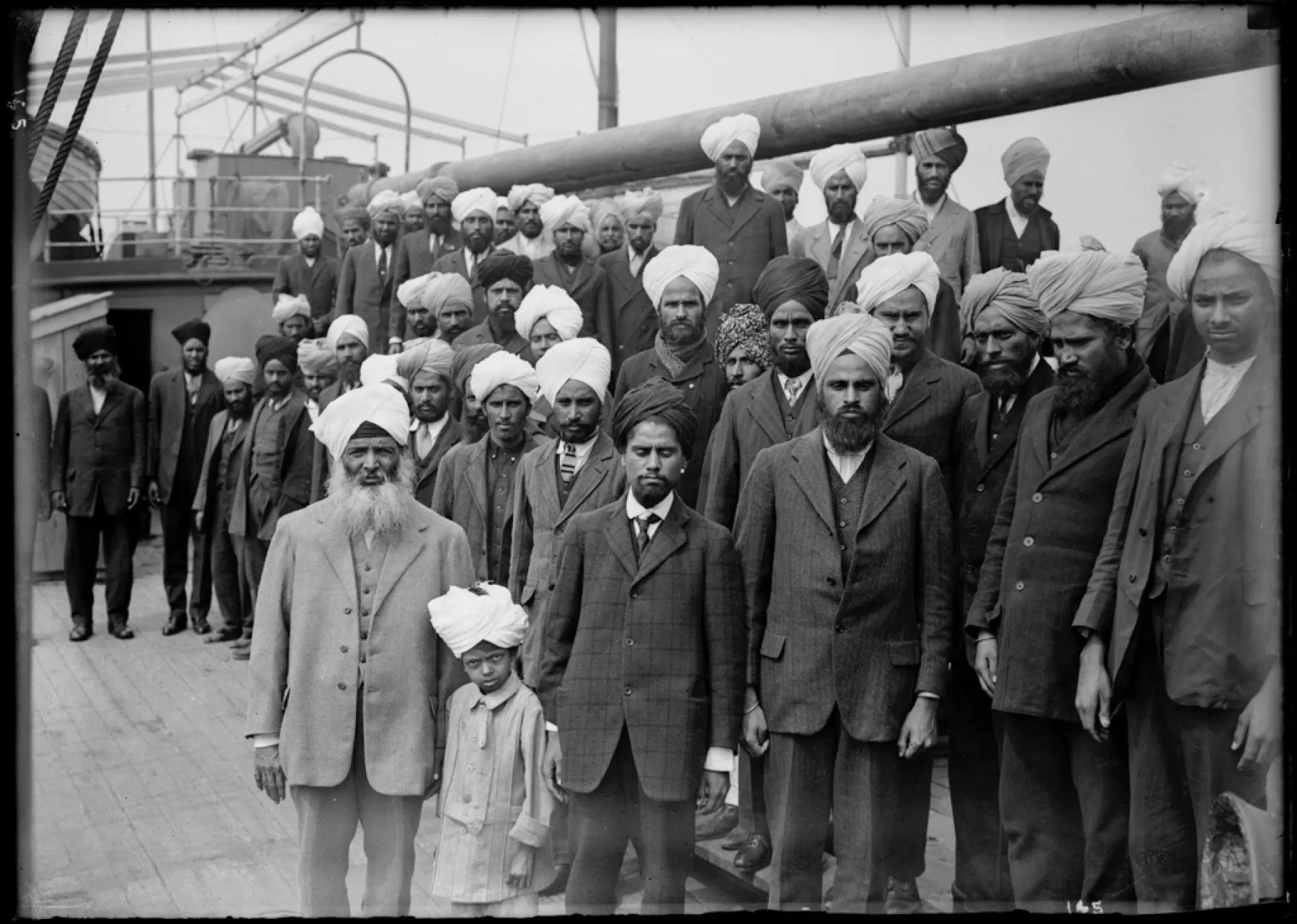
Vancouver Public Library 6231 PNG. 1914.
Komagata Maru
In May 1914, the SS Komagata Maru arrived in Vancouver with 376 passengers. The government denied them entry to Canada, and they had to remain onboard in the harbour for two months before being forced to leave.
The ship sponsor, Gurdit Singh, seen in the left foreground of the photo above with his son, was a leader of the Ghadar movement. On racism in Canada in particular, Gurdit Singh reflected:
But what about the Indians who are said to be British subjects protected by their benign government? What most grievously hurt them was that Indians living in Canada had sent for their wives and children who purchased tickets… When they were about to land the Canadian government stopped them with an order to return back to Hong Kong. Pause for a moment to imagine the heart-rending scene on the docks. Fathers had come to receive their children, husbands had come to receive their wives but the Canadian Government’s brutal order stood between them. To sigh and shed tears in silence was all they could do.
– Gurdit Singh, from his autobiography Voyage of the Komagata Maru or India’s Slavery Abroad
Upon the passengers’ return to India, British authorities prepared to detain many upon suspicion they were Ghadar supporters. A riot resulted, and many of the passengers were killed or injured.
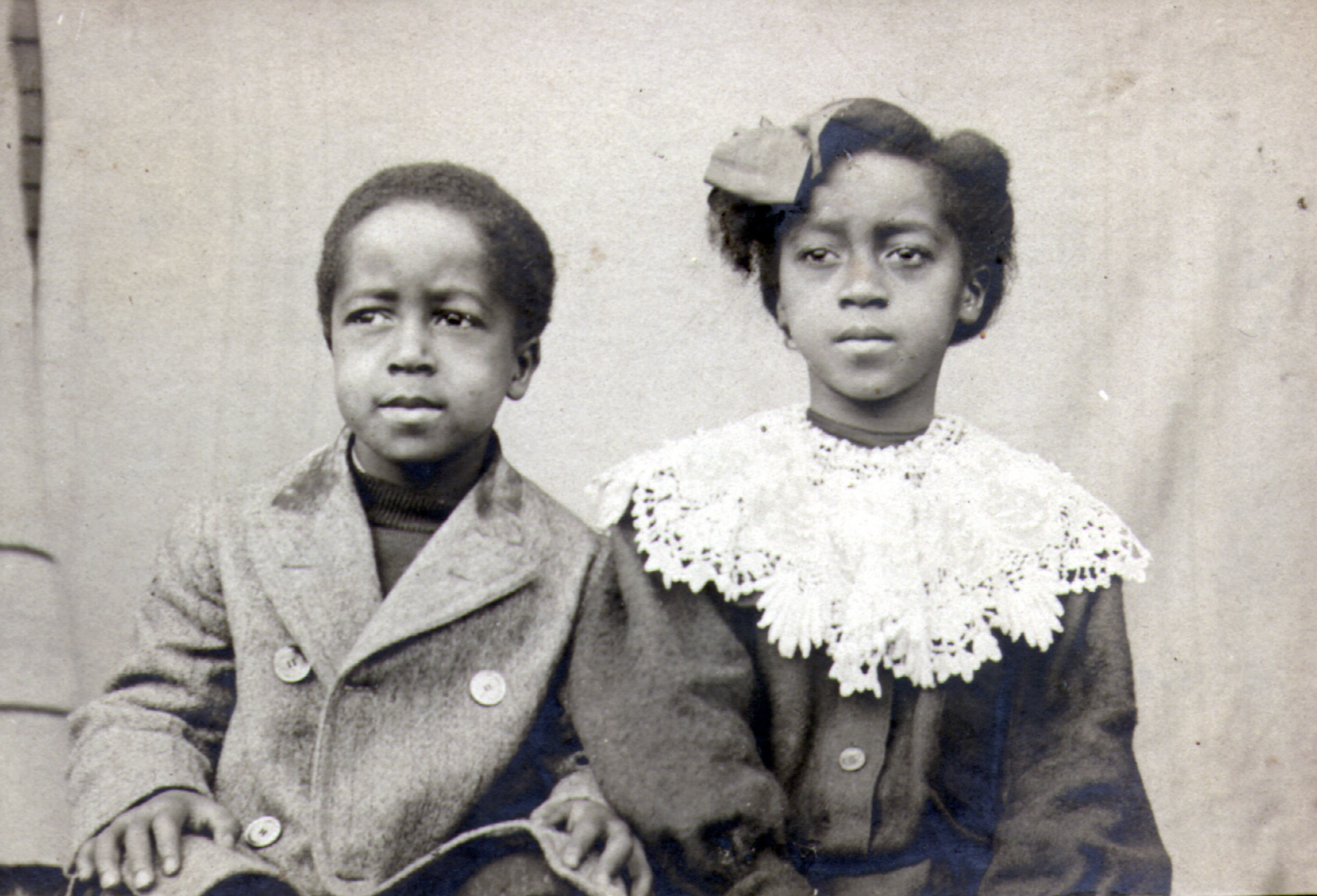
Siblings Ethel (top right) and Oscar (top left), and Myrtle (right), participated in the NCA Youth activities. Photos: Salt Spring Island Archives
Negro Christian Alliance, Vancouver
On December 18, 1915 the movie Birth of a Nation was advertised to be shown at the Avenue Theatre in Vancouver. The film, set during the American Civil War, famously glorifies lynching, the Klu Klux Klan, and anti-Black racism. In response, the Negro Christian Alliance (NCA), founded by Harriet Blanche Davis and Milton P Fuller in Vancouver, penned a letter to the editor opposing the screening and describing the film as “offensive to all the coloured people throughout the earth.” The NCA’s intervention ensured that racist propaganda would not go uninterrupted in Vancouver.
Established in the fall of 1910, the NCA organized regular community meetings where all were welcome to join, irrespective of race or religion. The group presented speakers and review papers, hosted discussions and debates, and provided opportunities for local talent to perform. The Alliance also organized debate and discussion over pressing political subjects of the day, from women’s suffrage to prohibition, and supported a Sunday school and numerous clubs and activities for youth. These multifaceted efforts defended Black communities against white supremacy by creating spaces where Black culture, politics, and kinship could thrive.
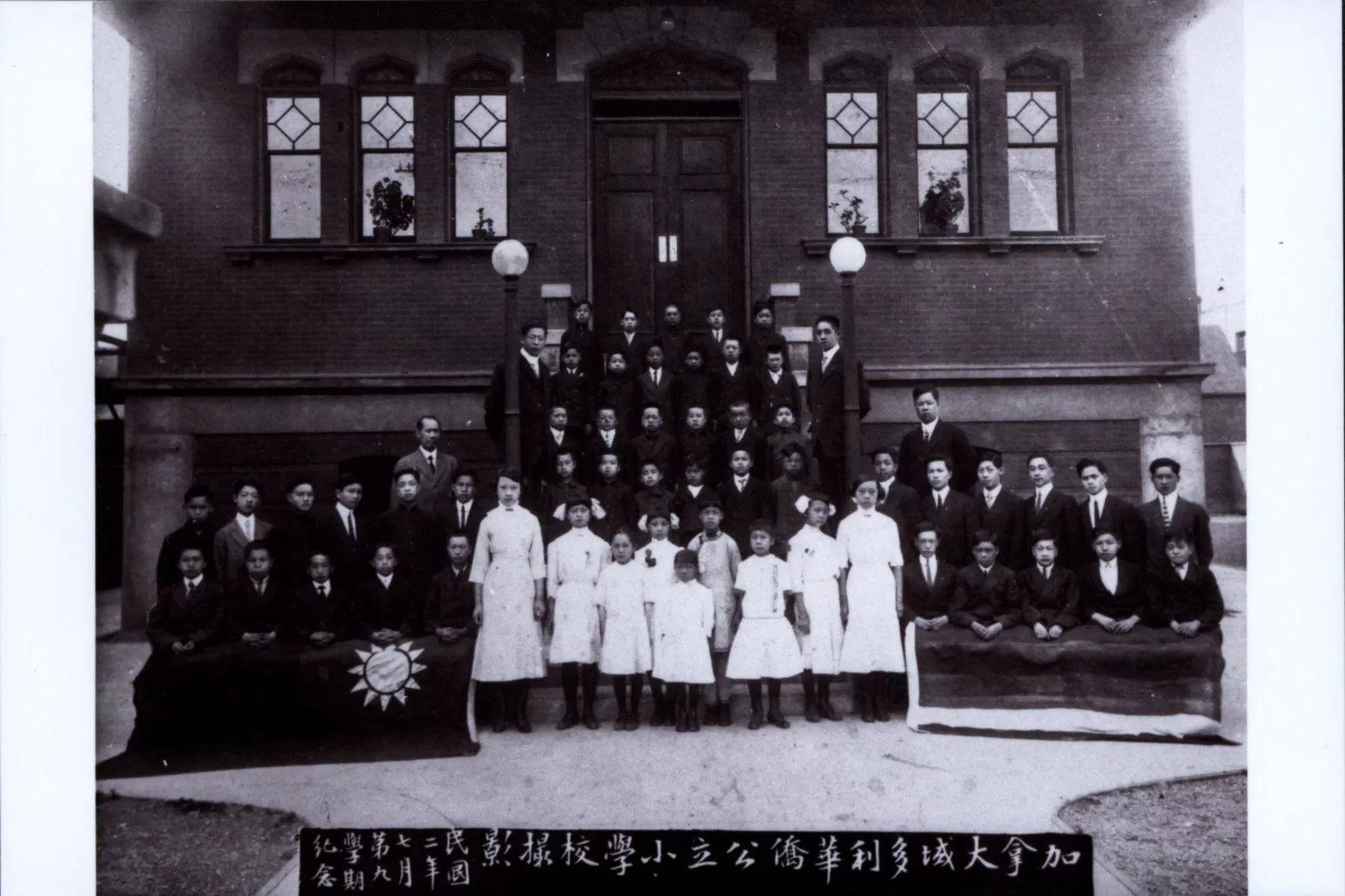
9th graduating class of the Overseas Public Chinese School, 1913. Photo: City of Victoria Archives, M07972.
Sites of Resistance
White supremacy in Canada created social and economic structures that reflected the domination o f settler elites. However, racialized communities often formed their own institutions allowing for ongoing social interactions. This allowed communities to generate ongoing resistance to discriminatory policies that affected communities. Below are select examples of such institutions.
Chinese Public School
In 1913, Victoria’s Chinese school expanded and was renamed the Chinese Public School. During the exclusion era, literacy in Chinese came to be seen as an essential survival skill in a world in which the Chinese might be forced to go to China. As Lee Mong Kow, the founder of what became Victoria’s Chinese Public School (CPS), explained in 1899, “[W]e are Chinamen, no matter where we go … and find that, . . ., it is necessary to have an education in Chinese as well as in English.”
The CPS truly was a public school. It was organized by the governing body of the community the Chinese Consolidated Benevolent Association; it charged no tuition, was coeducational, and starting in 1908 taught curricula approved by the Chinese Ministry of Education and was inspected by its officials. Its graduates could attend high school in China. Its Chinese language classes were suffused with a nationalist Chinese ethos. It also offered English language instruction for students who were excluded from the public schools. In 1915, the first high school class graduated. In 1917, the Vancouver Chinese Benevolent Association opened its own Chinese Public School.
Gurdwaras
A gurdwara means the house of the guru and refers to a building which houses the sacred and spiritual text for the Sikhs, the Sri Guru Granth Sahib Ji. Gurdwaras serve as the epicentre of both spirit and sustenance, serving a vegetarian communal meal to anyone who enters its space. When Sikh men began to migrate to British Columbia, even in the early stages from 1904-1905, there was a keen awareness that gurdwaras were needed. Regardless of the precariousness of a Sikh person’s sense of permanent home, often living and working from bunkhouse to bunkhouse across the province, they still needed a gurdwara. Gurdwaras, beginning with the first in Vancouver on West 2nd Avenue built in 1908, and then the second in Abbotsford, built in 1911 – were safe spaces for any person of South Asian descent, be they Hindu, Muslim, or Sikh.
The gurdwara became the site to resist racism at the time, to fight for the right to the vote, to fight for the passengers on board the Komagata Maru. And so, the gurdwaras across British Columbia served many purposes including religious spirituality, a pan-South Asian camaraderie, and a safe political site to discuss and fight racism and white supremacist systems at the time.
Japanese Language Schools
Japanese Canadian newcomers hoped their children would learn the Japanese language and schools became important centres for the communities as they developed in different parts of the province.
Over 50 schools were in operation before World War II. For example, the Vancouver Japanese Language School was founded in 1906 and continues to this day. Located at the heart of the community near Powell Street (Paueru Gai) it was designated a heritage site by Vancouver City in 1995.
